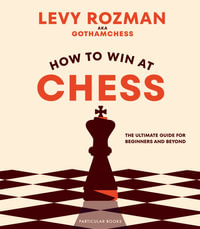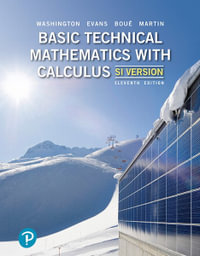Preface xv
1 Brief Review of Hypothesis Testing Concepts/Issues and
Confidence Intervals 1
1.1 Basic Concepts of Hypothesis Testing, 1
1.2 Review of Confidence Intervals and Their Relationship to
Hypothesis Tests, 5
1.3 Sports Applications, 9
1.4 Observed Power, Retrospective Power, Conditional Power, and
Predictive Power, 9
1.5 Testing for Equality, Equivalence, Noninferiority, or
Superiority, 10
1.5.1 Software, 11
References, 12
Exercises, 14
2 Methods of Determining Sample Sizes 17
2.1 Internal Pilot Study Versus External Pilot Study, 20
2.2 Examples: Frequentist and Bayesian, 24
2.2.1 Bayesian Approaches, 30
2.2.2 Probability Assessment Approach, 31
2.2.3 Reproducibility Probability Approach, 32
2.2.4 Competing Probability Approach, 32
2.2.5 Evidential Approach, 32
2.3 Finite Populations, 32
2.4 Sample Sizes for Confidence Intervals, 33
2.4.1 Using the Finite Population Correction Factor, 36
2.4.1.1 Estimating Population Totals, 38
2.5 Confidence Intervals on Sample Size and Power, 39
2.6 Specification of Power, 39
2.7 Cost of Sampling, 40
2.8 Ethical Considerations, 40
2.9 Standardization and Specification of Effect Sizes, 42
2.10 Equivalence Tests, 43
2.11 Software and Applets, 45
2.12 Summary, 47
References, 47
Exercises, 53
3 Means and Variances 57
3.1 One Mean, Normality, and Known Standard Deviation, 58
3.1.1 Using the Coefficient of Variation, 65
3.2 One Mean, Standard Deviation Unknown, Normality Assumed,
66
3.3 Confidence Intervals on Power and/or Sample Size, 67
3.4 One Mean, Standard Deviation Unknown, Nonnormality Assumed,
70
3.5 One Mean, Exponential Distribution, 71
3.6 Two Means, Known Standard Deviations?Independent
Samples, 71
3.6.1 Unequal Sample Sizes, 74
3.7 Two Means, Unknown but Equal Standard
Deviations?Independent Samples, 74
3.7.1 Unequal Sample Sizes, 76
3.8 Two Means, Unequal Variances and Sample
Sizes?Independent Samples, 77
3.9 Two Means, Unknown and Unequal Standard
Deviations?Independent Samples, 77
3.10 Two Means, Known and Unknown Standard
Deviations?Dependent Samples, 78
3.11 Bayesian Methods for Comparing Means, 81
3.12 One Variance or Standard Deviation, 81
3.13 Two Variances, 83
3.14 More Than Two Variances, 84
3.15 Confidence Intervals, 84
3.15.1 Adaptive Confidence Intervals, 85
3.15.2 One Mean, Standard Deviation Unknown?With Tolerance
Probability, 85
3.15.3 Difference Between Two Independent Means, Standard
Deviations Known and Unknown?With and Without Tolerance
Probability, 88
3.15.4 Difference Between Two Paired Means, 90
3.15.5 One Variance, 91
3.15.6 One-Sided Confidence Bounds, 92
3.16 Relative Precision, 93
3.17 Computing Aids, 94
3.18 Software, 94
3.19 Summary, 95
Appendix, 95
References, 96
Exercises, 99
4 Proportions and Rates 103
4.1 One Proportion, 103
4.1.1 One Proportion?With Continuity Correction, 107
4.1.2 Software Disagreement and Rectification, 108
4.1.3 Equivalence Tests and Noninferiority Tests for One
Proportion, 109
4.1.4 Confidence Interval and Error of Estimation, 110
4.1.5 One Proportion?Exact Approach, 113
4.1.6 Bayesian Approaches, 115
4.2 Two Proportions, 115
4.2.1 Two Proportions?With Continuity Correction, 119
4.2.2 Two Proportions?Fisher?s Exact Test, 121
4.2.3 What Approach Is Recommended?, 122
4.2.4 Correlated Proportions, 123
4.2.5 Equivalence Tests for Two Proportions, 124
4.2.6 Noninferiority Tests for Two Proportions, 125
4.2.7 Need for Pilot Study?, 125
4.2.8 Linear Trend in Proportions, 125
4.2.9 Bayesian Method for Estimating the Difference of Two
Binomial Proportions, 126
4.3 Multiple Proportions, 126
4.4 Multinomial Probabilities and Distributions, 129
4.5 One Rate, 130
4.5.1 Pilot Study Needed?, 132
4.6 Two Rates, 132
4.7 Bayesian Sample Size Determination Methods for Rates,
135
4.8 Software, 135
4.9 Summary, 136
Appendix, 136
References, 140
Exercises, 144
5 Regression Methods and Correlation 145
5.1 Linear Regression, 145
5.1.1 Simple Linear Regression, 146
5.1.2 Multiple Linear Regression, 150
5.1.2.1 Application: Predicting College Freshman Grade Point
Average, 155
5.2 Logistic Regression, 155
5.2.1 Simple Logistic Regression, 156
5.2.1.1 Normally Distributed Covariate, 158
5.2.1.2 Binary Covariate, 162
5.2.2 Multiple Logistic Regression, 163
5.2.2.1 Measurement Error, 165
5.2.3 Polytomous Logistic Regression, 165
5.2.4 Ordinal Logistic Regression, 166
5.2.5 Exact Logistic Regression, 167
5.3 Cox Regression, 167
5.4 Poisson Regression, 169
5.5 Nonlinear Regression, 172
5.6 Other Types of Regression Models, 172
5.7 Correlation, 172
5.7.1 Confidence Intervals, 174
5.7.2 Intraclass Correlation, 175
5.7.3 Two Correlations, 175
5.8 Software, 176
5.9 Summary, 177
References, 177
Exercises, 180
6 Experimental Designs 183
6.1 One Factor?Two Fixed Levels, 184
6.1.1 Unequal Sample Sizes, 186
6.2 One Factor?More Than Two Fixed Levels, 187
6.2.1 Multiple Comparisons and Dunnett?s Test, 192
6.2.2 Analysis of Means (ANOM), 193
6.2.3 Unequal Sample Sizes, 195
6.2.4 Analysis of Covariance, 196
6.2.5 Randomized Complete Block Designs, 197
6.2.6 Incomplete Block Designs, 198
6.2.7 Latin Square Designs, 199
6.2.7.1 Graeco-Latin Square Designs, 202
6.3 Two Factors, 203
6.4 2k Designs, 205
6.4.1 22 Design with Equal and Unequal Variances, 206
6.4.2 Unreplicated 2k Designs, 206
6.4.3 Software for 2k Designs, 208
6.5 2k ? p Designs, 209
6.6 Detecting Conditional Effects, 210
6.7 General Factorial Designs, 211
6.8 Repeated Measures Designs, 212
6.8.1 Crossover Designs, 215
6.8.1.1 Software, 217
6.9 Response Surface Designs, 218
6.10 Microarray Experiments, 219
6.10.1 Software, 220
6.11 Other Designs, 220
6.11.1 Plackett?Burman Designs, 220
6.11.2 Split-Plot and Strip-Plot Designs, 222
6.11.3 Nested Designs, 224
6.11.4 Ray designs, 225
6.12 Designs for Nonnormal Responses, 225
6.13 Designs with Random Factors, 227
6.14 Zero Patient Design, 228
6.15 Computer Experiments, 228
6.16 Noninferiority and Equivalence Designs, 229
6.17 Pharmacokinetic Experiments, 229
6.18 Bayesian Experimental Design, 229
6.19 Software, 230
6.20 Summary, 232
Appendix, 233
References, 234
Exercises, 239
7 Clinical Trials 243
7.1 Clinical Trials, 245
7.1.1 Cluster Randomized Trials, 247
7.1.2 Phase II Trials, 247
7.1.2.1 Phase II Cancer Trials, 247
7.1.3 Phase III Trials, 247
7.1.4 Longitudinal Clinical Trials, 248
7.1.5 Fixed Versus Adaptive Clinical Trials, 248
7.1.6 Noninferiority Trials, 249
7.1.7 Repeated Measurements, 249
7.1.8 Multiple Tests, 250
7.1.9 Use of Internal Pilot Studies for Clinical Trials, 250
7.1.10 Using Historical Controls, 250
7.1.11 Trials with Combination Treatments, 251
7.1.12 Group Sequential Trials, 251
7.1.13 Vaccine Efficacy Studies, 251
7.2 Bioequivalence Studies, 251
7.3 Ethical Considerations, 252
7.4 The Use of Power in Clinical Studies, 252
7.5 Preclinical Experimentation, 253
7.6 Pharmacodynamic, Pharmacokinetic, and Pharmacogenetic
Experiments, 253
7.7 Method of Competing Probability, 254
7.8 Bayesian Methods, 255
7.9 Cost and Other Sample Size Determination Methods for
Clinical Trials, 256
7.10 Meta-Analyses of Clinical Trials, 256
7.11 Miscellaneous, 257
7.12 Survey Results of Published Articles, 259
7.13 Software, 260
7.14 Summary, 263
References, 263
Exercises, 275
8 Quality Improvement 277
8.1 Control Charts, 277
8.1.1 Shewhart Measurement Control Charts, 278
8.1.2 Using Software to Determine Subgroup Size, 281
8.1.2.1 ¯X -Chart, 282
8.1.2.2 S-Chart and S2-Chart, 284
8.1.3 Attribute Control Charts, 286
8.1.4 CUSUM and EWMA Charts, 289
8.1.4.1 Subgroup Size Considerations for CUSUM Charts, 290
8.1.4.2 CUSUM and EWMA Variations, 291
8.1.4.3 Subgroup Size Determination for CUSUM and EWMA Charts
and Their Variations, 291
8.1.4.4 EWMA Applied to Autocorrelated Data, 293
8.1.5 Adaptive Control Charts, 293
8.1.6 Regression and Cause-Selecting Control Charts, 293
8.1.7 Multivariate Control Charts, 295
8.2 Medical Applications, 296
8.3 Process Capability Indices, 297
8.4 Tolerance Intervals, 298
8.5 Measurement System Appraisal, 300
8.6 Acceptance Sampling, 300
8.7 Reliability and Life Testing, 301
8.8 Software, 301
8.9 Summary, 302
References, 302
Exercises, 305
9 Survival Analysis and Reliability 307
9.1 Survival Analysis, 307
9.1.1 Logrank Test, 308
9.1.1.1 Freedman Method, 311
9.1.1.2 Other Methods, 312
9.1.2 Wilcoxon?Breslow?Gehan Test, 313
9.1.3 Tarone?Ware Test, 313
9.1.4 Other Tests, 314
9.1.5 Cox Proportional Hazards Model, 314
9.1.6 Joint Modeling of Longitudinal and Survival Data, 315
9.1.7 Multistage Designs, 316
9.1.8 Comparison of Software and Freeware, 316
9.2 Reliability Analysis, 317
9.3 Summary, 318
References, 319
Exercise, 321
10 Nonparametric Methods 323
10.1 Wilcoxon One-Sample Test, 324
10.1.1 Wilcoxon Test for Paired Data, 327
10.2 Wilcoxon Two?Sample Test (Mann?Whitney Test),
327
10.2.1 van Elteren Test?A Stratified Mann?Whitney
Test, 331
10.3 Kruskal?Wallis One-Way ANOVA, 331
10.4 Sign Test, 331
10.5 McNemar?s Test, 334
10.6 Contingency Tables, 334
10.7 Quasi-Likelihood Method, 334
10.8 Rank Correlation Coefficients, 335
10.9 Software, 335
10.10 Summary, 336
References, 336
Exercises, 339
11 Miscellaneous Topics 341
11.1 Case?Control Studies, 341
11.2 Epidemiology, 342
11.3 Longitudinal Studies, 342
11.4 Microarray Studies, 343
11.5 Receiver Operating Characteristic ROC Curves, 343
11.6 Meta-Analyses, 343
11.7 Sequential Sample Sizes, 343
11.8 Sample Surveys, 344
11.8.1 Vegetation Surveys, 344
11.9 Cluster Sampling, 345
11.10 Factor Analysis, 346
11.11 Multivariate Analysis of Variance and Other Multivariate
Methods, 346
11.12 Structural Equation Modeling, 348
11.13 Multilevel Modeling, 349
11.14 Prediction Intervals, 349
11.15 Measures of Agreement, 350
11.16 Spatial Statistics, 350
11.17 Agricultural Applications, 350
11.18 Estimating the Number of Unseen Species, 351
11.19 Test Reliability, 351
11.20 Agreement Studies, 351
11.21 Genome-wide Association Studies, 351
11.22 National Security, 352
11.23 Miscellaneous, 352
11.24 Summary, 353
References, 354
Answers to Selected Exercises 363
Index 369

























